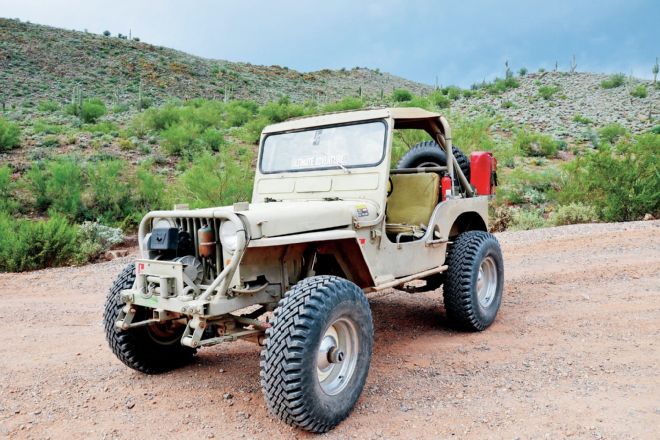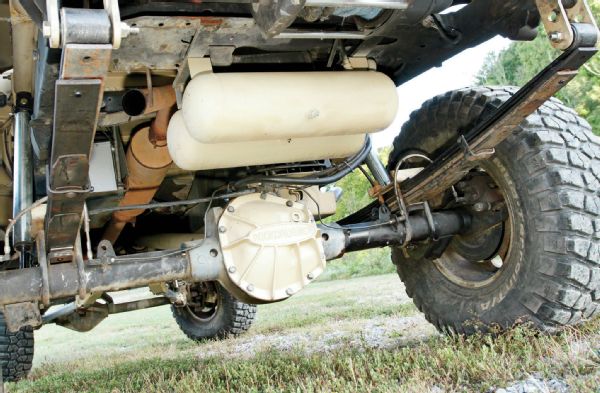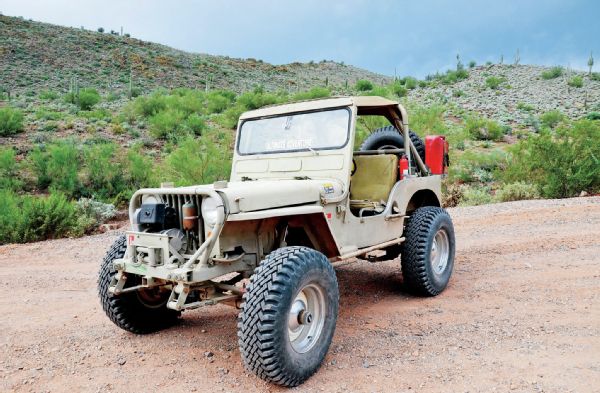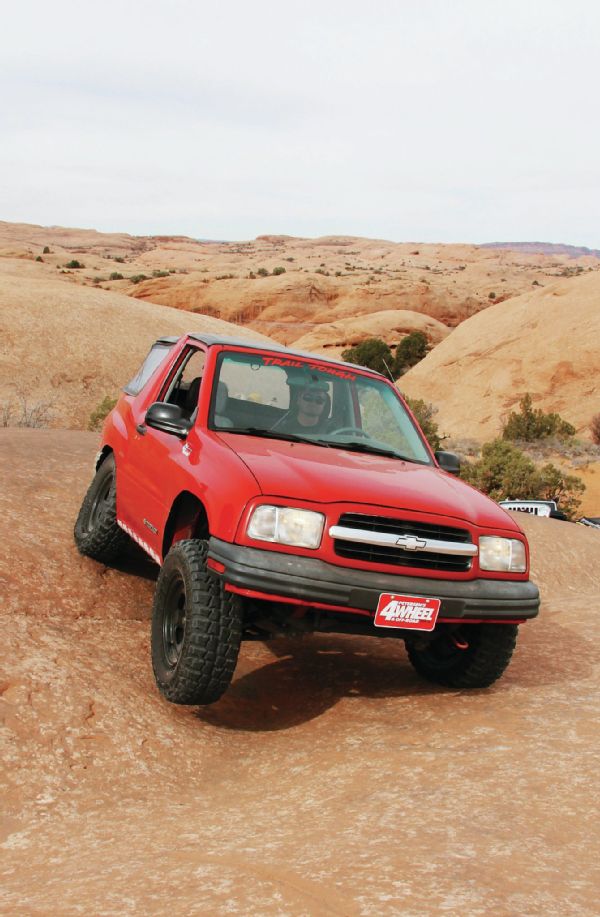
February Spring Follow-Up
Q I am writing in regards to two articles in the Feb. ’15 issue. In “Old -School Tire Test,” the flattie in the article has spring-over in the front and is spring-under in the rear. What springs were used? What was overall diameter of tires tested? Second [third? —ed.], in “Franger or Nord,” one of the captions states that the center pin on the springs was moved rearward 21⁄2 inches. Can you drill an second hole in a leaf spring and not lose too much strength? Maybe it’s OK if the original hole is supported by the spring pad? Thank you in advance for any information you can provide.
Jim Harshman
via nuts@4wheeloffroad.com

A We always appreciate getting questions from readers that indicate they read the magazine rather than just looking at the pictures, and your questions are good ones. The flattie belongs to Senior Editor Verne Simons and has been through many different builds over the years, mostly in our sister publication Jp. It’s one of the coolest flatties out there because it’s simple and well thought out, the result of years of refinement. Although Verne has used several different suspension setups in the past, the current version is one of the best. On the front spring-over, Verne uses modified stock YJ rear leaf springs. The spring-under rear of the flattie is supported by heavily modified stock Wagoneer front springs (mounted backwards) with extra leafs from YJ lift springs to get the desired ach. Confused? So are we, but the combination works and is the result of years of trial and error. Verne has had the rear setup as a spring-over with a traction bar in the past, but he could never get axlewrap under control and maintain the flex he wanted. A spring-under configuration places less wrap-inducing leverage on the springs and also puts the axle in the spot where the springs were designed to properly control it. The Coker tires in the test measured right at 36 inches tall.
As for your second question, there’s more to the story on the rear springs under Mike Marrero’s Frontier than we could cover in a single caption. I reached out to Marrero for clarification, and he explained that he initially had a set of rear springs built to his specifications by a custom spring manufacturer. The manufacturer got most of it right but missed the location of the centering pin. A second attempt yielded similar results. Under a time crunch, Marrero ended up combining the custom packs with the old off-the-shelf 64-inch GM lift springs he had been using to create the combination that you saw in the article. He reports that it’s not ideal (axlewrap remains an issue), but it worked at the time and it’s in basically the same configuration to this day. He plans to have a local custom spring shop make him a set of springs that should resolve the issues once and for all. Such is the lot of anyone building something outside the box

Your concerns regarding redrilling a centering pin in a spring pack are valid. It is not a good idea to redrill a centering pin hole in a leaf pack, especially a main leaf. Stress cracks usually develop at the original hole or the new one, and the leaf eventually ends up snapping in two. I have redrilled main leafs in a pinch, but about half the time I’ve ended up with a broken spring even when the hole locations were firmly clamped under the U-bolt plates. It’s usually better idea to drill another centering pin hole in the axle pad if small wheelbase adjustments are needed.
Sidekick Tips
Q I’m looking to purchae a 1990s two-door Suzuki Sidekick for my everyday ride and would like to build it for light to medium trail use. Nothing too crazy since I have a back injury, and these seem to be about the only 4x4 that I can sit in. Are there any years to avoid, or that I should look for? I prefer a manual tranny and few frills.
Mike
Via nuts@4wheeloffroad.com

A For advice on the best Sidekicks to buy, I turned to our resident Geo Tracker owner (identical to the Sidekick) and frequent contributor, Harry Wagner.
Harry Wagner: I think that the Sidekicks (and their Tracker twins) make great little wheeling rigs that get decent mileage on the street. From 1989 through 1998 they were pretty consistent; the only thing that comes to mind is the use of both 8-valve and 16-valve 1.6L fuel injected engines. The 8V uses throttle body fuel injection, while the 16V has multiport fuel injection (and it should say “16V” on the timing cover). The 8V is rated at 80 hp at 5,400 rpm and 94 lb-ft of torque at 3,000 rpm, while the 16V is rated at 95 hp at 5,600 rpm and 98 lb-ft of torque at 4,000 rpm.
While the 16V is preferable, I would just try to find the cleanest example with relatively low miles. The one issue with these engines is that they use a timing belt, but they are noninterference engines. If the vehicle has over 100,000 miles on it, ask the seller for evidence that the belt has been changed, or use that as a bargaining tool to lower the price. With 31s and a rear locker I was amazed at where my Tracker would go, although the short wheelbase and automatic locker were a handful on the street (much more so than my Toyota pickup or Ford truck with Detroits).
So there you have it. Sidekicks and Trackers are generally pretty solid, inexpensive vehicles. Beyond checking for all the usual suspects (oil leaks, tire condition, exterior and interior condition, and so on) it shouldn’t be all that hard to find a clean vehicle that is a solid base for a mild vehicle build that can take you just about anywhere.
Submission Information
Confused? Email your questions about trucks, 4x4s, and off-roading tech using “Nuts, I’m confused” as the subject and include a picture (if it’s applicable). Digital photos must measure no less than 1600 x 1200 pixels (or two megapixels) and be saved as a TIFF, an EPS, or a maximum-quality JPEG file. Also, I’ll be checking the forums on our website (4wheeloffroad.com), and if I see a question that I think more of you might want to have answered, I’ll print that as well. Otherwise drop it old-school style with the envelope addressed to the address below. Letters published in this magazine reflect the opinions of the writers, and we reserve the right to edit letters for clarity, brevity, or other purposes. Write to: Nuts & Bolts, 4-Wheel & Off-Road, 831 S. Douglas St., El Segundo, CA 90245 fax to: 818.566.8501 Email to: nuts@4wheeloffroad.com